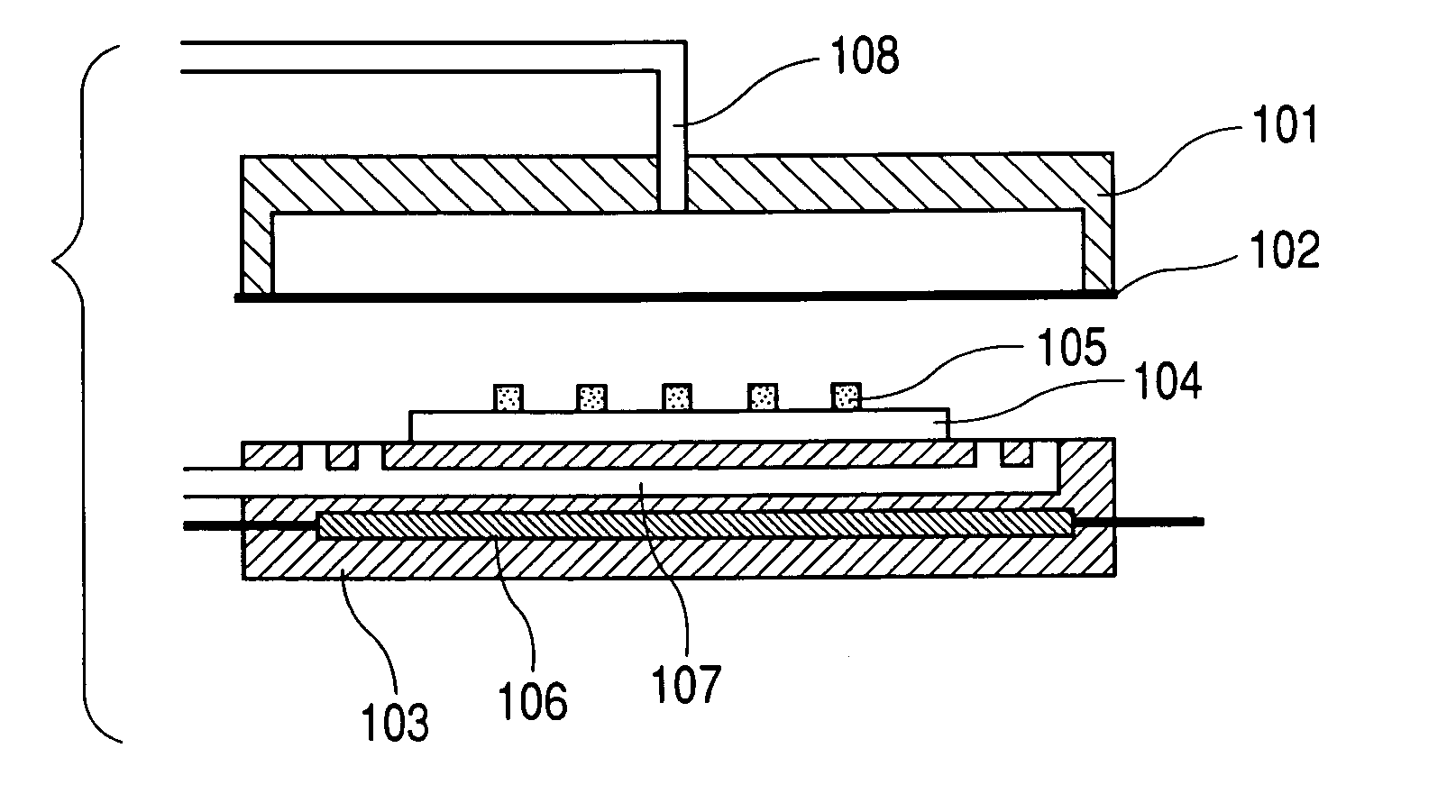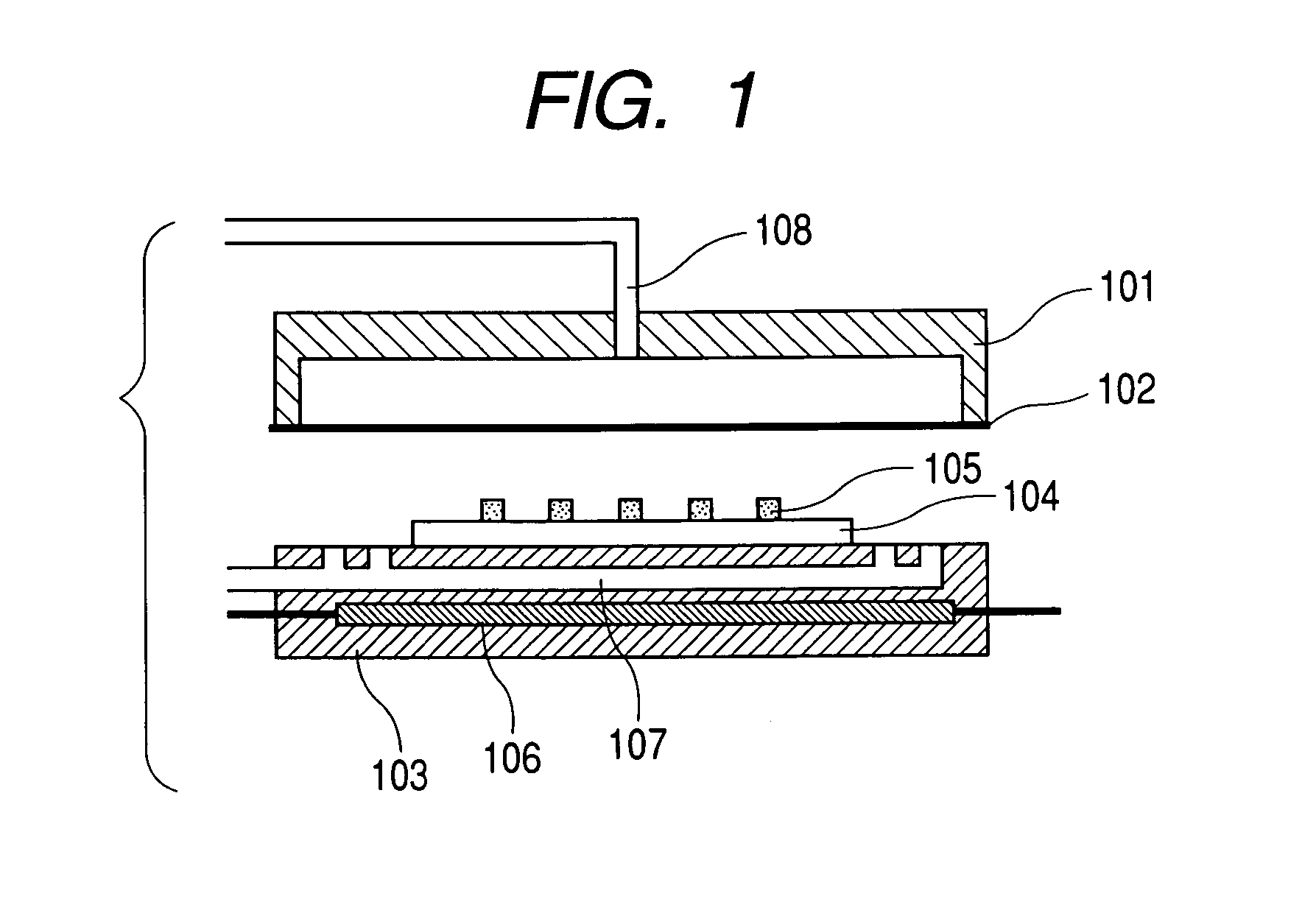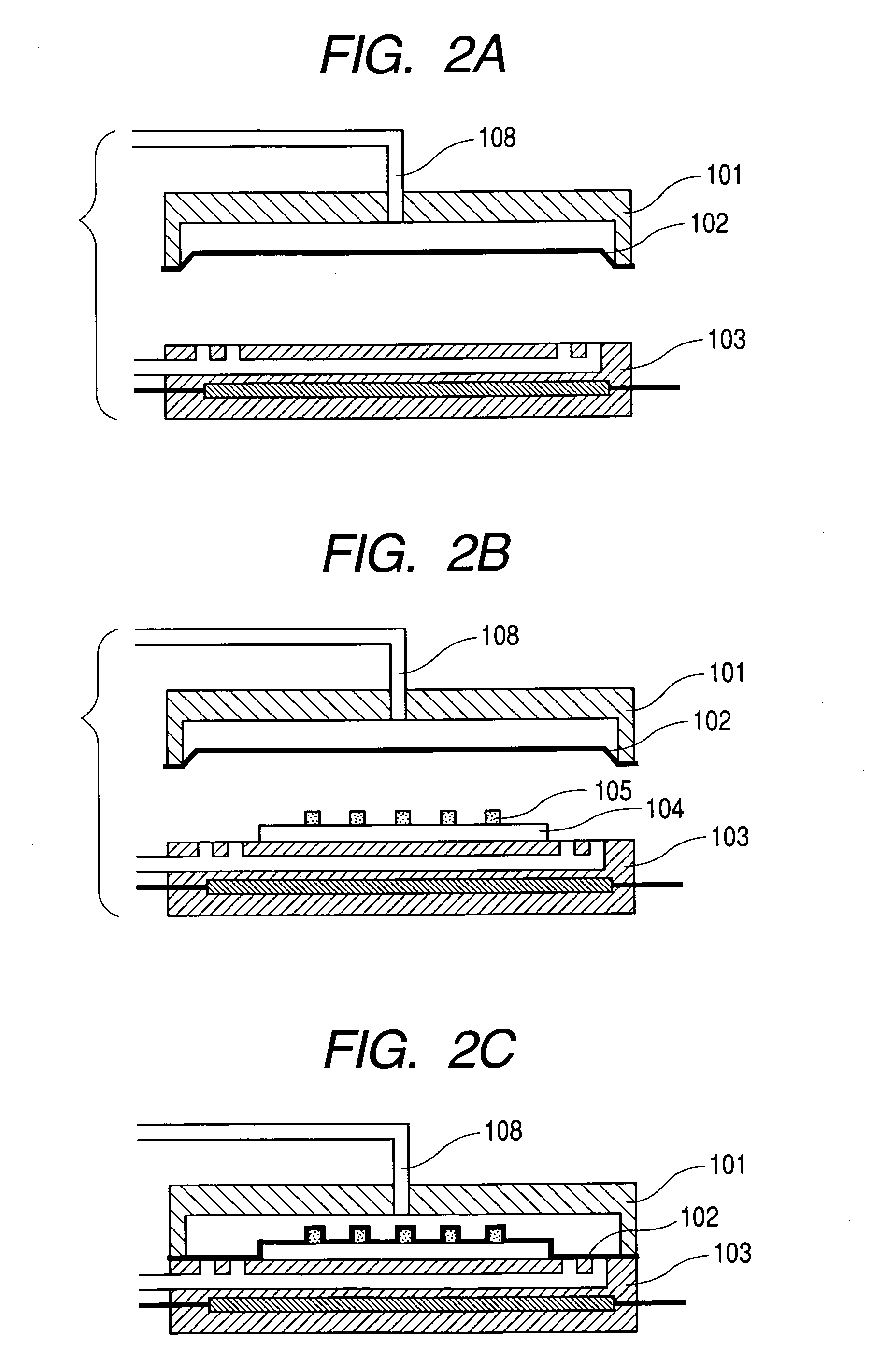Thermal contact-bonding method and thermal contact-bonding apparatus
a contact bonding method and contact bonding technology, applied in the direction of mechanical control devices, process and machine control, instruments, etc., can solve problems such as product failure, and achieve the effect of preventing contamination
- Summary
- Abstract
- Description
- Claims
- Application Information
AI Technical Summary
Benefits of technology
Problems solved by technology
Method used
Image
Examples
embodiment 1
[0048] Embodiment 1
[0049]FIG. 1 and FIGS. 2A to 2F are schematic sectional view illustrating a thermal contact-bonding apparatus and a thermal contact-bonding method according to Embodiment 1. Embodiment 1 relates to a thermal contact-bonding method of arranging a conductive adhesive-coated metal wire as disclosed in U.S. Pat. No. 4,260,429 on a light-receiving surface of a photovoltaic device, and heating and pressing the whole with a heater, to thereby fix the metal wire on the light-receiving surface of the photovoltaic device.
[0050] In FIG. 1, an upper chamber 101 is provided with a depressed portion (400 mm×400 mm×depth of 5 mm) at a lower portion of the upper chamber. A resin sheet 102 is composed of a glass fabric sheet impregnated with 55 parts by weight of a polytetrafluoroethylene (PTFE) resin and a polytetrafluoroethylene (PTFE) resin tape attached to the central portion (380 mm×380 mm), which a material to be processed is brought into contact with, of the sheet. The res...
embodiment 2
[0063] Embodiment 2
[0064]FIG. 3 shows a schematic sectional view illustrating a material to be processed according to Embodiment 2, and FIG. 4 shows a schematic sectional view illustrating a thermal contact-bonding method according to Embodiment 2. Embodiment 2 relates to a coating method using a single vacuum laminator for producing a photovoltaic device module as disclosed in Japanese Patent Application Laid-Open No. H09-191116.
[0065] In FIG. 3, a photovoltaic device module is obtained by laminating a photovoltaic device 321; a glass fiber nonwoven fabric 322 (coating weight: 20 g / m2, thickness: 100 μm, acrylic resin binder content: 4.0 wt. %) as a light-receiving surface coating material; an EVA sheet 323 (thickness: 460 μm); an undrawn ETFE film 324 (thickness: 50 μm); an insulating film 326 (thickness: 75 μm) as a back surface coating material; EVA sheets 325 and 327 which are the same as that of used for the surface coating material 323 as adhesives; and Galvalume steel plate...
PUM
| Property | Measurement | Unit |
|---|---|---|
| thickness | aaaaa | aaaaa |
| thickness | aaaaa | aaaaa |
| width | aaaaa | aaaaa |
Abstract
Description
Claims
Application Information
 Login to View More
Login to View More - R&D
- Intellectual Property
- Life Sciences
- Materials
- Tech Scout
- Unparalleled Data Quality
- Higher Quality Content
- 60% Fewer Hallucinations
Browse by: Latest US Patents, China's latest patents, Technical Efficacy Thesaurus, Application Domain, Technology Topic, Popular Technical Reports.
© 2025 PatSnap. All rights reserved.Legal|Privacy policy|Modern Slavery Act Transparency Statement|Sitemap|About US| Contact US: help@patsnap.com



